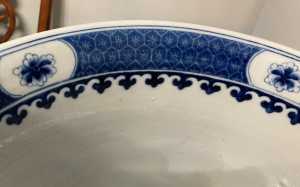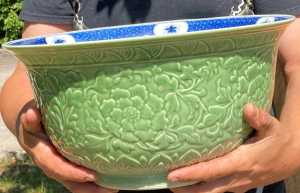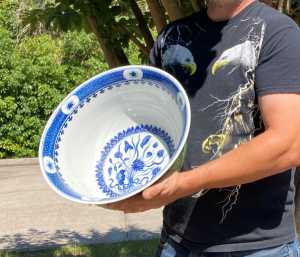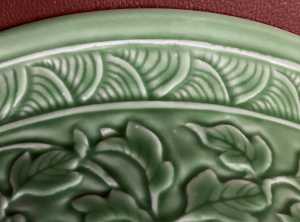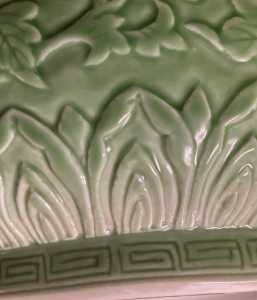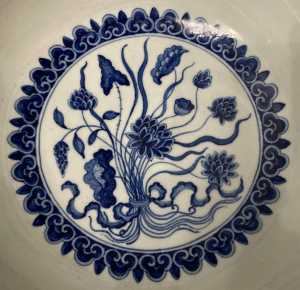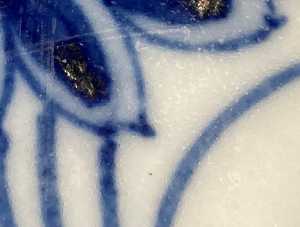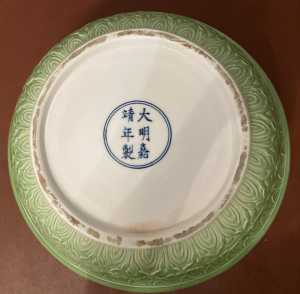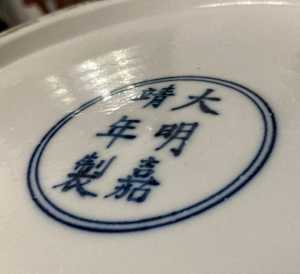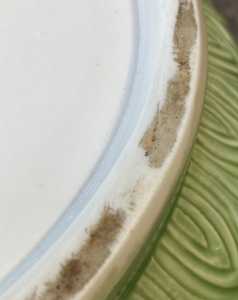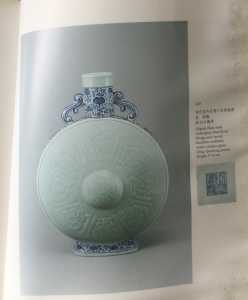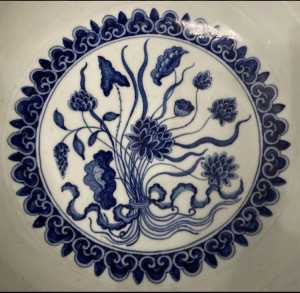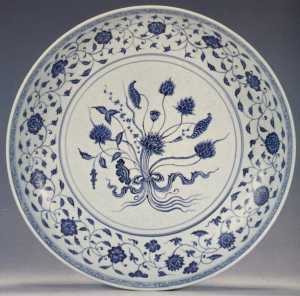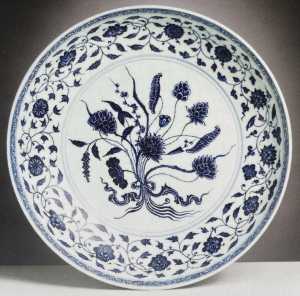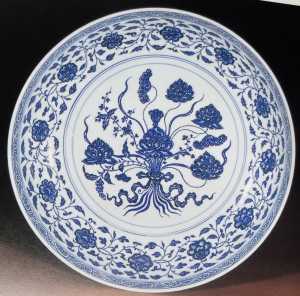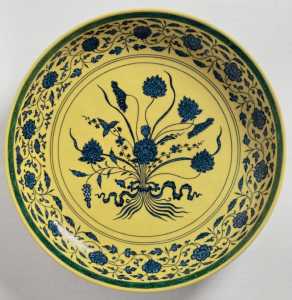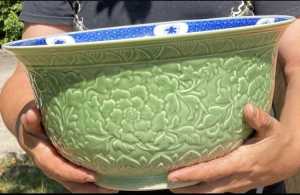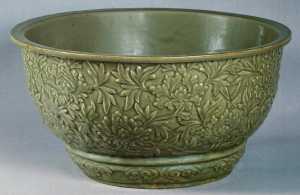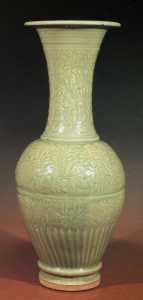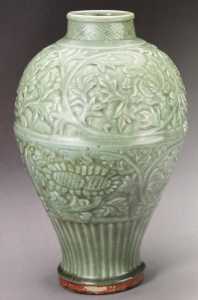The Chinese and Asian Art Forum. For Fans, Collectors and Dealers.
 Basic Rules For the BidAmount Asian Art Forum: Talk about whatever you want. You can even discuss and offer things that are for sale if they are authentic. Maximum image file size per post is 2 MB. Images of 700pxl x 700pxl are optimal if saved at a medium resolution. Be respectful of others and enjoy yourself. Click the YouTube link for a brief tutorial on using the forum. You can also EMBED Videos by cutting and pasting from You-Tube, Vimeo etc.
Basic Rules For the BidAmount Asian Art Forum: Talk about whatever you want. You can even discuss and offer things that are for sale if they are authentic. Maximum image file size per post is 2 MB. Images of 700pxl x 700pxl are optimal if saved at a medium resolution. Be respectful of others and enjoy yourself. Click the YouTube link for a brief tutorial on using the forum. You can also EMBED Videos by cutting and pasting from You-Tube, Vimeo etc.
NOTE: To post an item or add a new post, click open the category title from the FORUM LIST, and CLICK the Blue ADD TOPIC button.
Could someone shed some light on the use of Ming designs during the Kangxi?
Specifically, I am researching what is called the lotus bouquet motif, which is a Ming design that I am aware was revived during the Yongzheng and Qianlong. I am wondering if there are also known examples made during the Kangxi.
Sorry...I'm holding back on my photo (for now) until I speak with Christie's, but I have acquired a large bowl that is beautifully decorated on the inside with the lotus bouquet, and the most amazing carved peony flower design on the exterior in celadon, that is marked Jiajing. I'm confident the piece is 18th or older, but to my knowledge, during the Yongzheng and Qianlong, apocryphal Jiajing marks were not used.
That leaves the Kangxi period, which is well known to have used Jiajing marks, or it is a genuine Ming example which would make this piece an extraordinary find.
Below are links to a Yongzheng and early Ming example. I've seen about 20 different versions from various Ming periods, Yongzheng, and Qianlong, but no Kangxi. If anyone knows of Kangxi examples, I would appreciate if you would post photos or links. Thanks.
https://www.christies.com/en/lot/lot-5823726
https://www.christies.com/en/lot/lot-5564325
Hi Greeno -
As far as I’am aware this design was not reintroduced until the Yongzheng period, where unmark and YZ mark/period examples ate known in underglazed blue upon a white ground, and against a yellow ground, are known ...
Both types copy the early 15th C originals ...
Stuart
@ming1449 Thanks, Stuart!
Then, can I ask if you know if this border can be found in Jiajing period wares? I know this is hard with seeing only a part...sorry for that.
Hi Greeno -
No worries ...
Based on image, this border design is unknown from that period ...
Just returned from London viewings, so will check my database/reference library tomorrow but, based on the painting style, this seems rather far from that known/seen on authentic Jiajing wares ...
Will revert if anything matching/close to found ...
Stuart
Stuart,
I'm still waiting to hear back from Christie's, but I've come to the conclusion the bowl is likely late Kangxi / early Yongzheng, so here's the bowl. From what I can find, the border with hex design can be found in both the Kangxi and Yongzheng, but since the the bowl shows so much fine control of design, and the use of the lotus bouquet, I'm leaning towards Yongzheng. I was also able to find an example of an apocryphal jiajing mark attributed to Yongzheng in the British Museum collection, so it seems that they do exist in the Yongzheng period.
But, I've been unsuccessful coming up with anything similar, so I would appreciate your thoughts (even if they should suggest I'm way off) on the period.
Here, the first two photos show the bowl when I first bought it and took photos of it in bright full sun. You can see how brilliant the cobalt really glows, and the celadon has almost a jade like quality to it, not to mention how white the porcelain is. The green glaze thins near the base of the bowl, but comes evenly and cleanly to the foot rim (last photo).
The flower and leaf design is quite finely carved, including some leaves depicted partially folded/turned. The exterior rim has alternating horn (rhino) pattern and the around the exterior base, the design uses lappets and scrolling Greek pattern around the footrim.
The next photo is of the center round panel inside the bowl of the lotus bouquet. The detail and piling of the blue is superb. The close up shows the bubbles expected from early wood kiln firing.
The final photos are of the mark, bottom, and foot rim. You can see how thin the slip, so much so that you can see the texture of the bottom of the bowl's porcelain (the ring pattern created when formed on the potter's wheel). The foot rim is has some dark areas that I'm not sure why they've discolored.
Let me know your thoughts. Thx.
Wow! Again, wow!
Looking at your pictures of the bowl, my initial impression is that design wise it falls towards Qianlong. I guess it is the slightly jarring juxtaposition of the celadon design outside and the blue & white Ming design on the inside. Your bowl mystery sent me searching the stacks this morning for something similar. Here is what I found.
This is from the handbook of the collection in the short lived Tsui Museum of Art in Hong Kong.
@william Thank you for looking! That moon flask is a stunning example of the mix of celadon with blue and white. The mystery is that the bowl very much feels the quality of imperial work...so, why the apocryphal mark? Why Jiajing of all periods?
The lotus bouquet and carved celadon exterior seem to have more in common with other well known periods.
It did come from a very good collection, much of which had been donated to a very respectable museum years ago.
Was the bottom gilded at one point
@lotusblack Do you mean with gold? Not that I can see... I don't think so.
I guess the dark mark on the bottom is from sliding the mash potatoes back and forth. I seen gilded bottoms on imperial pieces in museums it was not gold gild more bronzy
@lotusblack I was thinking it would be a great serving bowl for Thanksgiving, too! 😉
Hi Greeno -
A most intriguing, and impressive looking, object ...
As with yourself, I can find no reference for another example that comes even remotely close in terms of overall motif combination nor that with a Jiaging mark ...
I have some concerns:-
The painting style of the ‘lotus bouquet’, seems slightly stiff/placed when compared to know YZ mark and unmarked examples:-
1:- image shows this motif on your bowl ...
2:- is a very large, D. 50.7 cm, unmarked dish, sold Lot 139, Sby’s HK 25 May 1990, attributed to YZ period ...
3:- Large dish, D. 38.5 cm, YZ six-character m/p, sold Lot 31, Bhm’s LD 10 Nov 2003 ...
The design seen on your bowl and images 2/3 are based on, and very closely follow, the Ming early 15thC Yongle/Xuande originals ...
4/5:- two dishes, both YZ m/p, first D. 35 cm, Lot 379 sold Sbys HK 01 Nov 1999, second D. 20.9, the Gugong, Palace Museum, Beijing ...
Both 4/5 are more typical painting style examples of this motif during YZ, which continues into Qianlong period ...
6:- Large dish, 40cm, YZ m/p, sold Lot 74, Sby’s HK, 7 April 2011, ex Meiyintang Coll - included to show this motif on a yellow ground, which also continues into QL period ...
Note the differences in the detailing of the lotus flowers, the large leaf to the left, or the arrow head leaf, or the movement of the ribbons, especially on 2/3, when compared to that on your piece, which seems to lack the ‘flow’ seen of these ...
As mentioned I can find no reference, or have never seen, an authentic example of this ‘lotus bouquet’ motif used on a bowl, either Ming or later 17/18th C ...
The deeply carved exterior designs, covered in a Longquan type celadon glaze, also copies known late Yuan/early Ming examples but these originals are quite rare. The overlapping concentric wave motif, seen under the exterior mouth-rim on this piece, is rendered in a very different manner and rarely seen on these earlier wares ...
I can also find no trace of genuine 18thC examples which follow the early originals and displays such deeply carved designs - although this does not imply that such were not produced ...
So, certainly not Jiajing period and all the reference/catalogue entires would indicate that this ‘lotus bouquet’ motif was not reintroduced until YZ period, so not Kangxi either ...
The fact that neither of us can find anything similar is also somewhat concerning ...?!
But you have handled and, no doubt, seen this piece in differing light and know how it ‘feels’ - which is the most important thing when forming a opinion on any object ...
But my thoughts only and, as mentioned previously, these later wares are really not my area, so I will defer to others. Perhaps if Giovanni@clayandbrush sees this thread he may wish to comment
I would be most interested to Christie’s response, as/when received ...
Stuart
Hi Green, William, Cory and all -
Thank you, William and Cory, for posting the image/links of the two Qianlong m/p moon flask for comparison ...
These are a known but fairly rare type combining underlazed blue motifs to the neck, sides and lower base with moulded designs under a pale, celadon like glaze to the main body ...
The style/design on this bowls exterior is very different, which is, probably, peony flowers carved in differing positions. This design closely copies that first seen on Yuan blue/white wares and continues, with slight variations in to Hongwu, seen on both underglazed blue and red, and into the Yongle/Xuande periods ...
Variations of this design are also seen on Longquan wares, the closest been on early Ming pieces, attached images for comparison:-
1:- Exterior of this bowl ...
2:- Very large, rare basin or jardiniere, D. 61 cm, sold Lot 117, Christie’s LD 12 May 1986. Attributed to 14/15 century in catalogue, recent excavations at the Imperial kiln site in 2013/14 unearthed identical shaped/sized pieces from stratum attributed to early Zhengtong period, decorated with various underglazed blue design. Such pieces are now attributed to late Xuande/Zhengtong periods
3:- Massive vase, H. 74 cm, sold Lot 305, Sby’s HK 1 Nov 1999, with alternating design of upward/downward facing peonies
4:- Large meiping vase, H. 46.5 cm, Palace Museum Beijing, with carved peonies to shoulder/upper body, lower body with double chrysanthemums ...
So the carved exterior design is a variant of that seen on Yuan/early Ming wares, the central interior ‘lotus bouquet’ copies that seen on Yongzheng period pieces - itself a reintroduced of an earlier 15thC Ming motif, and the base has a Jiajing six character mark, itself copied from the mid 17/early 18thC ...
It’s an intriguing combination, and interpretation of, various styles/motifs from differing periods ...
Stuart
Thanks for visiting "The BidAmount Asian Art Forum | Chinese Art"
If you sell on eBay, or have a shop feel free to post images and descriptions and links.
Check back often for discussion about the latest news in the Chinese art and antique world. Also find out about the latest Asian art auctions at Sotheby's, Christie's, Bonhams and Tajans.
Auction results for: fine porcelain, ceramics, bronze, jade, textiles and scholar's objects. As well as Japanese, Thai, Vietnamese and other Asian cultures.
Thank you,
Peter Combs
Topics and categories on The BidAmount Asian Art Forum | Chinese Art
Kangxi vases, Kangxi dishes and chargers, Kangxi ritual pieces, Kangxi scholar's objects, Qianlong famille rose, Qianlong enamels, Qianlong period paintings, Qianlong Emporer's court, Fine porcelain of the Yongzheng period. Chinese imperial art, Ming porcelain including Jiajing, Wanli, Xuande, Chenghua as well as Ming jades and bronzes.
The BidAmount Asian Art Forum | Chinese Art
A free Asian art discussion board and Asian art message board for dealers and collectors of art and antiques from China, Japan, Korea, Thailand, Cambodia, Vietnam and the rest of Asia. Linked to all of the BidAmount Asian art reference areas, with videos from plcombs Asian Art and Bidamount on YouTube. Sign up also for the weekly BidAmount newsletter and catalogs of active eBay listing of Chinese porcelain, bronze, jades, robes, and paintings.
The art of calligraphy - and for the ancient Chinese it certainly was an art - aimed to demonstrate superior control and skill using brush and ink. Calligraphy established itself as one of the major Chinese art forms during the Han dynasty (206 BCE - 220 CE), and for two millennia after, all educated men were expected to be proficient at it.
The Museum’s collections of Asian art span nearly five millennia and encompass the cultures of China, the Himalayas, India, Japan, Korea, and Southeast Asia. In 2007, the Museum launched an initiative to create dedicated galleries for the collection, beginning with a gallery for the arts of Korea ...
Chinese art is full of symbolism, in that artists typically seek to depict some aspect of a totality of which they are intuitively aware.
China Online Museum is the finest online museum of Chinese art. It features Chinese calligraphy, painting, ceramics, bronzes, carving, and other artworks.
Chinese Ceramics & Works of Art. Overview Upcoming auctions Contacts Auction results ... Christie’s sales of Chinese ceramics and works of art showcase centuries of Chinese history. Held throughout the year in London, New York, Paris and Hong Kong, they attract a wide audience of collectors and connoisseurs vying for pieces as diverse as ...
Explore Asian Art Week. Contact the Specialist Department. Chinese Paintings ... Senior Specialist, Head of Sale. [email protected]. Tel:+1 212 641 5760. Bid in-person or online for the upcoming auction:Fine Chinese Paintings on 10 September 2019 at New York. Bid in-person or online for the upcoming auction:Fine Chinese Paintings on 10 ...
Discover an abundance of must-see art from all corners of a vast continent at Christie’s NY Asian Art Week. From contemporary classical and Chinese paintings to works with exemplary provenance from the Art Institute of Chicago, our Rockefeller Paza galleries will be full of ancient treasures and contemporary masterworks in a salute to the vibrant arts of Asia.
Sold to benefit The Art Institute of Chicago’s Asian Art Acquisition Fund, the sale features 84 lots with a focus on Ming and Qing porcelains, and offers a rare insight into the taste for collecting Chinese ceramics and works of art in the Midwest from the end of the 19th century through the 1980s. Highlights include two Wanli wucai garlic-head vases, a Qianlong mark and period, blue and ...
Specialist, Chinese Paintings, Christie's London Dr Malcolm McNeill is a Specialist in Chinese Paintings at Christie’s, based in London. He previously worked as an assistant curator of the Chinese collections and the Victoria and Albert Museum in London, as a researcher at the British Museum, and as a translator and tour guide at the National Palace Museum in Taipei.
The Christie's Education 2020 Conference: The Chinese Art Market 18 Jun 2019 Christie’s Education is delighted to announce our first international academic conference in Asia which will take place in Hong Kong from 26-27 November 2020 at the Hong Kong Convention and Exhibition Centre and will run in parallel with Christie’s Hong Kong Autumn Auctions.
The summer Chinese Art sale in Hong Kong will feature works of art from several private collections, including Qing porcelains and textile from the collection of the legendary Chinese art dealer A. W. Bahr (1877–1959), fine gilt bronze Buddhist sculptures from an old Hong Kong collection, an East Asian collection of Qing dynasty wine cups and jades, and a Japanese collection of Song ceramics ...
Sotheby's Chinese Works of Art Department holds two auctions each year in London, New York, Hong Kong and Paris.
Chinese Art - View Auction details, bid, buy and collect the various artworks at Sothebys Art Auction House.
With more than 340 Chinese works of art dating from the Neolithic to the Republic periods, highlights of this sale include a selection of Qing Imperial monochromes from the collection of Arnold and Blema Steinberg, early ceramics from the Art Institute of Chicago and Chinese porcelain and works of art from the collection of Henry Arnhold.
Results: Sotheby's Asia Week achieved $52.4 million in six strong auctions, exceeding pre-sale estimates. With 76.5% of lots sold and 60.3% of lots surpassing high estimates, the Asian art sales at Sotheby's indicate continued collector interest in the finest works of art from China, India and and the Himalayas.
Today's sale of Important Chinese Art will proceed as planned with sessions at 10 AM and 2 PM EDT. Sotheby's will be monitoring the weather conditions throughout the day and will be available to coordinate alternative bidding options should conditions make it difficult for clients to attend the auction in person.
Bonhams Chinese Art department is renowned for offering the finest works of art representing the richness and breadth of China's artistic heritage, particularly Imperial porcelain, white and spinach green jades, cloisonné and Buddhist art. Specialised international auctions are held globally, including London, Hong Kong and San Francisco.
Bonhams : Chinese Works of Art We use cookies to remember choices you make on functionality and personal features to enhance your experience to our site. By continuing to use our site you consent to the use of cookies. Please refer to our privacy and cookie policies for more information.
Bonhams Fine Art Auctioneers & Valuers: auctioneers of art, pictures, collectables and motor cars. We use cookies to remember choices you make on functionality and personal features to enhance your experience to our site. By continuing to use our site you consent to the use of cookies. ... Chinese Art (US) General enquiries
Bonhams : Fine Chinese Art We use cookies to remember choices you make on functionality and personal features to enhance your experience to our site. By continuing to use our site you consent to the use of cookies. Please refer to our privacy and cookie policies for more information.
Bonhams Fine Art Auctioneers & Valuers: auctioneers of art, pictures, collectables and motor cars Bonhams : Asian Art We use cookies to remember choices you make on functionality and personal features to enhance your experience to our site.
Bonhams are international auctioneers of fine Chinese and Japanese art. We specialise in rare Imperial and Export Chinese ceramics and works of art, as well as Japanese ceramics, fine and decorative works of art from the Neolithic Period to the 20th century. View on map
Bonhams Fine Art Auctioneers & Valuers: auctioneers of art, pictures, collectables and motor cars. We use cookies to remember choices you make on functionality and personal features to enhance your experience to our site. By continuing to use our site you consent to the use of cookies. ... Asian Art Bonhams. Work. 22 Queen St.
